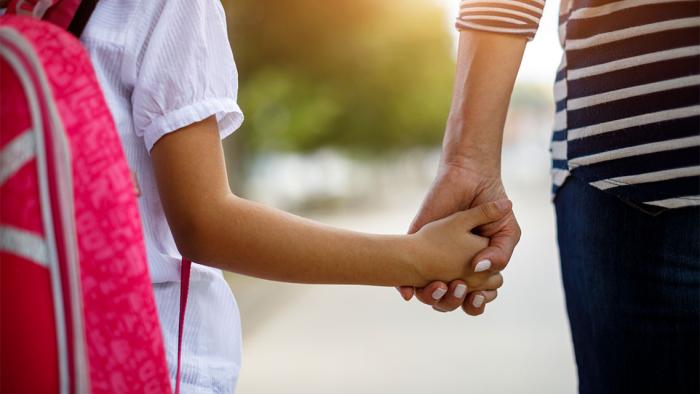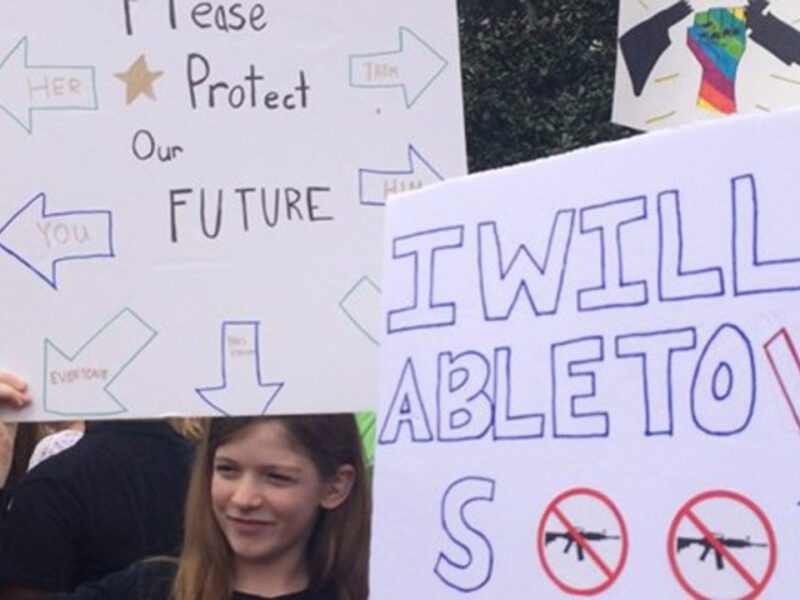How to Talk to Kids About School Shootings
Take an age-based approach to discussing news of school shootings with kids.
Common Sense Media | By Caroline Knorr | October 14, 2019
“School shootings” are two words no parent ever wants to hear in the same sentence. But news of these tragic events is now so familiar, the topic is unavoidable. Unlike other conversations you have with your kids about scary stuff in the news, talks about school shootings are much more emotional, for both you and your kids. Add in the facts that kids as young as 5 are practicing active-shooter drills at school, and that any kid with a phone can get notifications of every mass killing and follow minute-by-minute updates on social media — and it’s even more of a challenge to provide calm.
Focus on helping kids understand the news and information they’re seeing and hearing, while allowing them to express their questions and feelings. Cutting through the noise and chaos provides the stability and security kids need to process what’s going on — and to ultimately feel safe again.
Take an age-based approach
One of the great joys of parenthood is watching how kids’ thoughts and feelings about the world evolve over time. That’s why we often avoid difficult topics like sex, drugs, and violence: so we won’t disrupt the magic of this wonderful process. Take an age-based approach to discussing school shootings, being mindful of how your kid’s developmental stage affects their understanding.
Kids under 7
Young kids tend to think concretely, understand simple ideas best, and think of their immediate family as the center of their world. During times of stress, they may get whiny or engage in difficult behavior. It could be a sign that they need comfort even if they can’t articulate it.
What to say
Ask open-ended questions. If your kids don’t know what happened and don’t bring it up, you don’t necessarily have to fill in the blanks. If they bring up an incident, you can ask, “What did you hear?” or “What do you think is going on?”
Use simple sentences. Feel free to oversimplify if you have to. You can say, “Someone hurt people.” And if an idea is too complicated to explain — maybe you don’t need to.
Don’t overtalk. Once you’ve conveyed the news, you can wait until your kid asks questions to reopen the conversation.
Reassure them that they’re safe and that people are working on the problem. Even if you feel iffy about the situation, you want your kids to feel like you’re in charge and that it will be resolved.
Emphasize that emergency drills help keep them safe. Encourage them to follow the procedures and stay calm. Active-shooter drills are somewhat controversial, but if they’re mandated at your school, it’s best to be supportive when kids are within earshot.
What to do
Try to keep the news away. You might be eager for information, but try to be discreet. If you can’t turn off the news, try distracting your kid or changing their focus with a book or an activity.
Save strong emotions for your adult support community. You don’t have to be a robot, but avoid displaying strong emotions related to these tragic incidents around young kids. Kids often get scared when they don’t know why parents are upset. Make sure to say, “I’m upset about what I heard on the news. It’s not you.”
Allow them to express themselves how they want. You may see a wide range of reactions when you discuss bad news. Some kids may cry or act out when they’re upset and don’t know what to do. Some kids want quiet time with you. Some kids like to talk. Some like to draw their feelings.
Make it a normal day. Try to maintain a typical schedule so kids feel the safety of regularity. But feel free to indulge in extra comfort and togetherness.
Tweens and teens
At this age, kids are developing their moral beliefs, which means they can delve deeper into a subject. More exposure to peers, social media, and news means they’ll receive lots of information — some of which you may need to correct. You don’t need to sit them down for a formal talk: Sometimes, just doing an unrelated activity, such as watching TV, can lead to opportunities to have conversations about difficult topics.
What to say
Find out what they know. It’s likely that kids this age will have heard about a shooting before they get home from school. You can ask, “What did you hear today?”
State the facts. If they’ve heard about the incident, ask what they’ve learned. If they don’t know, you can say, “I need to tell you that there was a school shooting. I know you’ll hear about it, and I want it to come from me so we can talk about it.”
Check in. While it’s important to talk, tweens and teens may be more open if they can set the pace. The conversation can happen when it feels right. You can say, “I want us to take a few minutes to discuss what happened. Let’s talk either now or a little later.”
Encourage them to express themselves. Tweens and teens are learning how to communicate their ideas, but they may need prompting. You can ask questions, share what you know, or get a conversation going in other ways. Ask, “Do you have any questions?,” “How do you feel about this issue?,” and “Why do you feel that way?”
Read their cues. Sometimes kids are just done and can’t handle any more discussion. Be on the lookout for signs of information overload.
Share your feelings. Telling kids how you feel about what happened is a good thing to do even if they don’t ask. Saying you’re sad, mad, or whatever else will unburden you — plus it models empathy and compassion.
Talk about emergency drills. Many schools mandate active-shooter drills, even though their efficacy is debatable. Still, your kids need to comply. Make sure they understand the importance of following procedures and staying calm. It may take the edge off to discuss the duck-and-cover drills students practiced during the Cold War.
What to do
Help them feel secure. This is important for kids of all ages: Tell them that they’re safe, that you’re always there for them, and that the authorities are investigating. Provide emotional support by saying, “It’s OK to feel sad — or to not even know how you’re feeling.”
Look out for signs of anxiety, generalized worry, or traumatic stress. When bad things happen, kids can develop a fear that it will happen to them, their family, or their school. Allow your kid to express all of their concerns, even if they don’t seem directly related or even realistic. Validate their feelings, talk about ways they can calm themselves in times of intense stress (including calming thoughts, breathing exercises, and activities), and make it clear that you’re always available to talk things through. Your kid may benefit from a meditation app, but if their anxiety or sensitivity increases, you may want to talk to your pediatrician.
Model behavior. The truth is, no one really knows what to do in these situations. But if you want your tweens and teens to think more deeply about news and other information, you may need to start that process by demonstrating it for them. You’re showing them how to think about things, instead of what to think — which is essential for kids’ ability to view information critically. Try, “I always wonder why these things happen,” “What drives a person to do this?,” “What happens to the families, teachers, and other people who are affected?,” “I wonder if this will have an impact on gun laws,” and “Is there anything we can do?”
Filter news, or watch together. Tweens and teens get a lot of information from online sources like YouTube, which, as you’re well aware, is hit or miss. Point them toward quality, age-appropriate news sources such as Xyza: News for Kids or the New York Times’ The Learning Network, which handle mature news in youth-friendly terms. If you’re going to watch the news on television, do it together, and turn it off if it gets too graphic.
Compare different news sources. News coverage can vary by publication, and information about one story can vary wildly. Consider looking at how a youth-oriented source like Snapchat covers a school shooting versus, say, the Washington Post. Make sure kids know how to vet news sources by checking the URL, the reporter, and the site or app sponsors. Check out AllSides, which compares news across partisan lines.
Get involved. Since youth activism is well documented on social media and other outlets, tweens and teens can see how their actions make a real difference in the world. Explore ways kids can get involved in making changes about issues they believe in by checking out sites like DoSomething, Never Again, and March for Our Lives.






